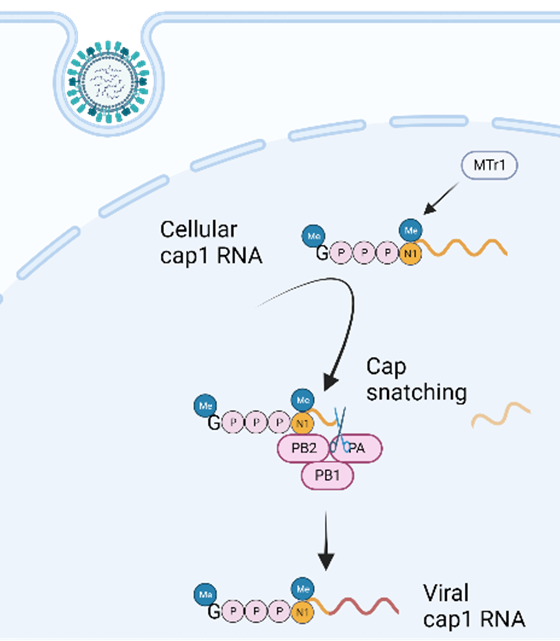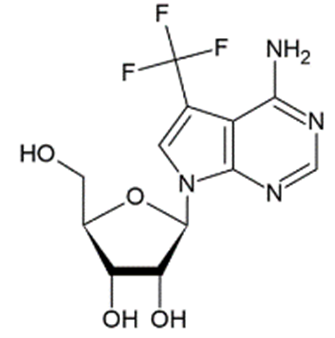TECHNOLOGY SEED
- Infectious disease
Unveiling Breakthrough Targets for Influenza Treatment.
Anti-influenza viral agents that specifically inhibit MTr1, a host enzyme essential for the influenza virus replication initiation process (cap snatching).
Advantages
- Completely different target from conventional anti-influenza viral drugs, synergistic effect when used in combination.
- This drug targets a host enzyme, making drug resistance less likely to emerge.
Background and Technology
In the replication of some virus families, a process called cap snatching is essential, in which a portion of the host RNA is hijacked to allow its own replication. Influenza A and B viruses (IAV and IBV) in particular require maturation of CAP RNA by MTr1 (2′-O-ribose methyltransferase 1) in the host before cap snatching can occur.
Conventional anti-influenza virus drugs have the weakness that they act directly on specific viral proteins, and thus drug resistance can easily emerge due to viral gene mutation.
We screened for antiviral drugs that inhibit host MTr1 and suppress influenza virus replication and developed TMFT (trifluoromethyl-tubercidin, a natural product derivative from Streptomyces, shown above left). TMFT inhibited IAV and IBV replication specifically and showed no cytotoxicity (below left and right figures).
Reference; Science 379, 586–591 (2023)
Patent and Reference
- Patent : Pending (US provisional application)
- Publication : Science 379, 586–591 (2023)
Current Stage and Next Step
- TFMT, a specific and non-toxic MTr1 inhibitor, was demonstrated to specifically inhibit replication of Cap Snatching-dependent viruses, IAV and IBV, and its mechanism was elucidated. We also confirmed its synergistic effect when used in combination with Xofluza, an existing anti-IAV drug.
- Seeking partners interested in developing TMFT-based or Cap Snatching-targeted anti-IAV drugs.
- Evaluations/feasibility study under a CDA, MTA, or research collaboration is available.







